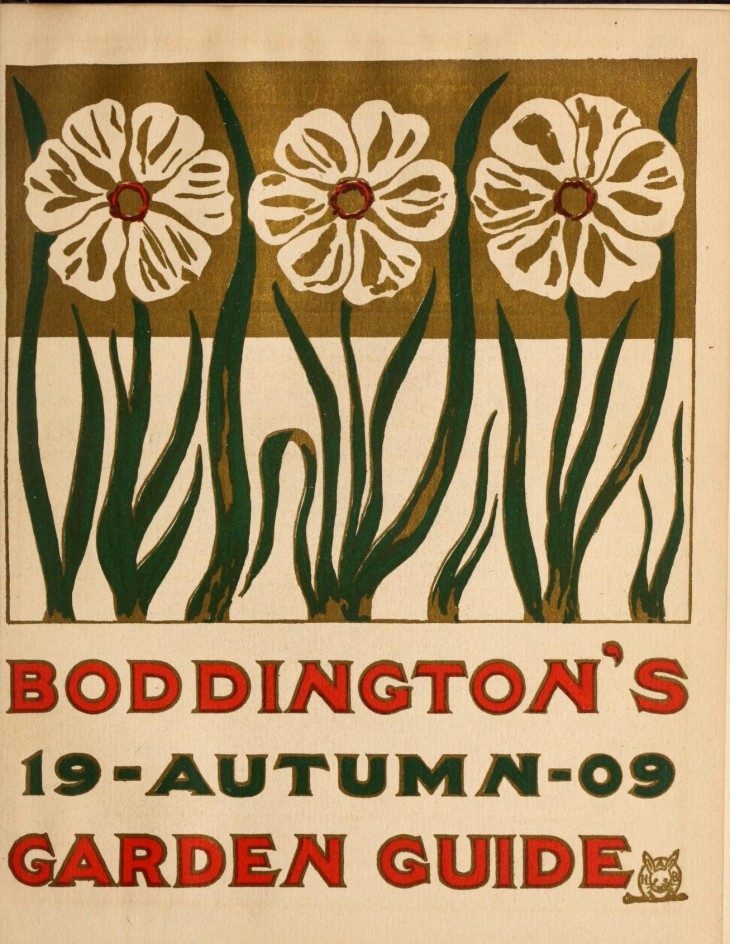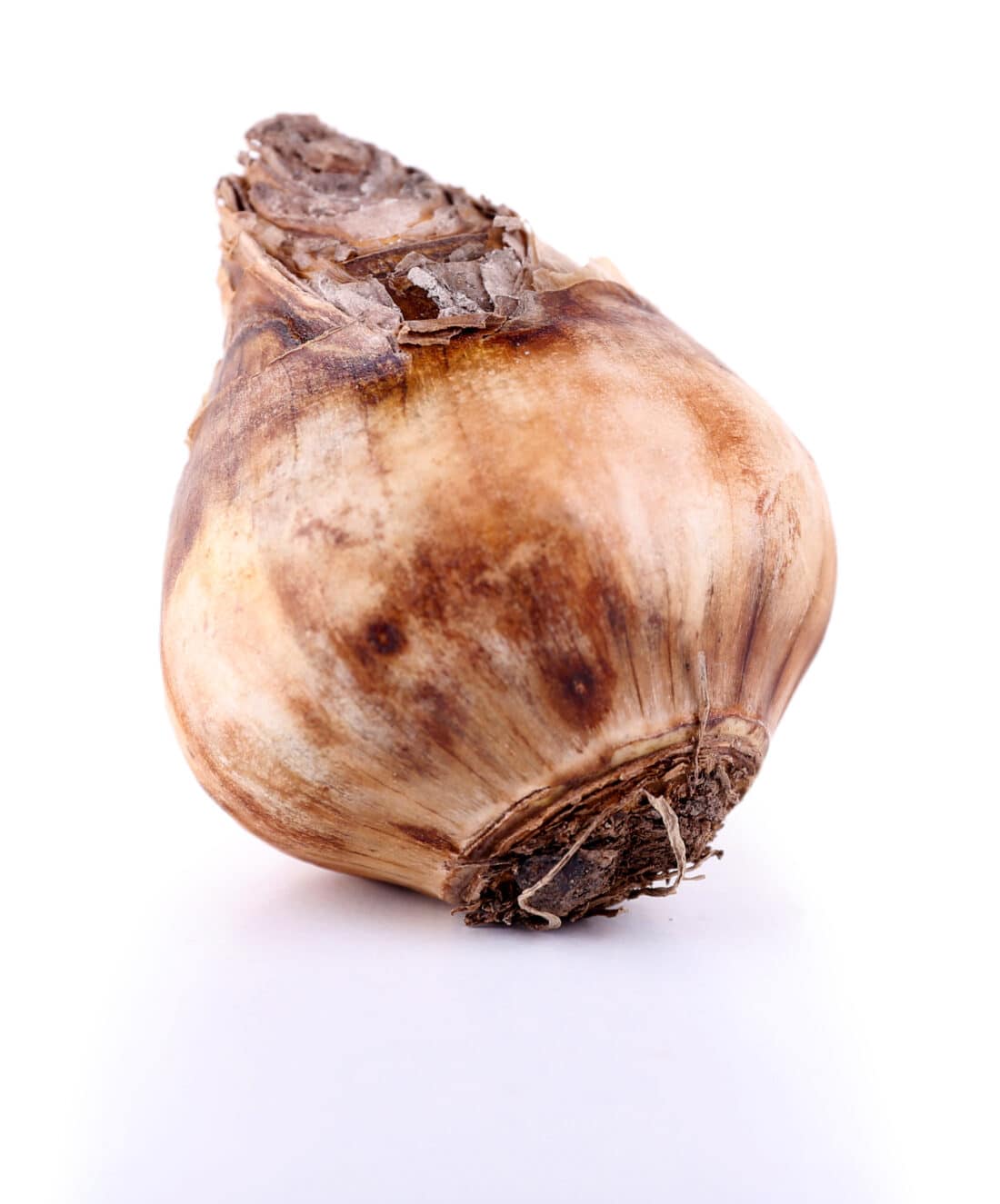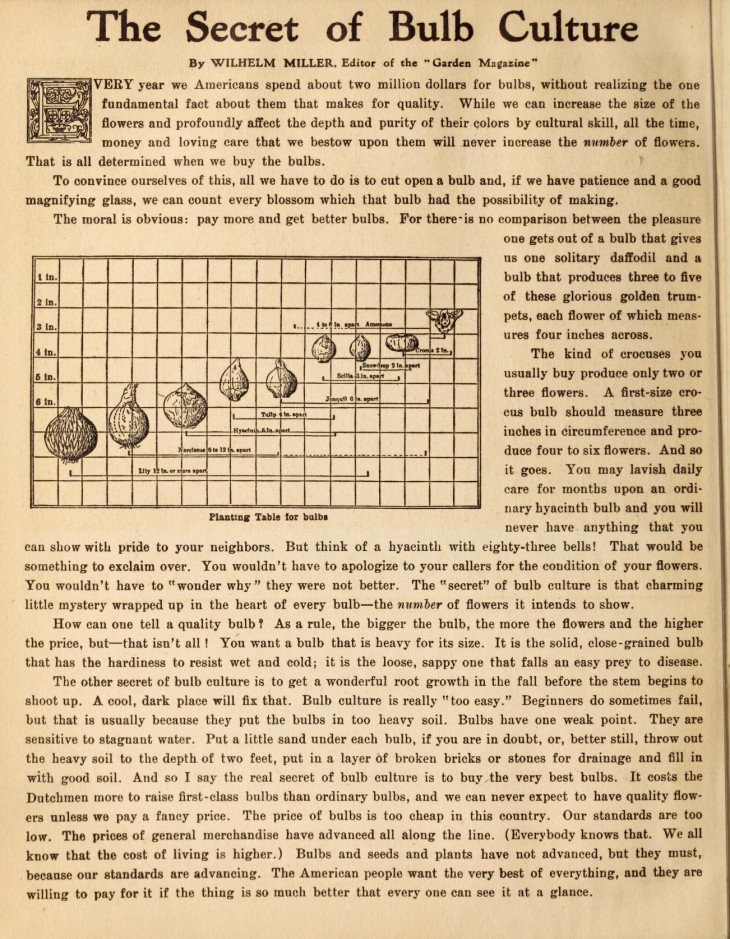I found this sweet 1909 Boddington’s Plant catalog and Autumn Garden guide with a page titled ‘The Secret of Bulb Culture’ in the Heritage Biodiversity Library. The pretty graphic cover caught my eye, but on closer inspection, I also learned a few things about how to tell if you have a good flower bulb or a less good bulb. I’ve pulled out the tidbits of great bulb advice below — but I’ve included the whole page at the bottom so that you can read it for yourself. It is a charming relic.

How to tell if you have a good flower bulb?
“To convince ourselves of this, all we have to do is to cut open a bulb and, if we have patience and a good magnifying glass, we can count every blossom which that bulb bad the possibility of making.”
What a great bit of information! I had no idea you could dissect bulbs to see how many flowers would come. Certainly, you don’t want to do this with every bulb as it will likely ruin the bulb from growing. Still, it is interesting that we can do a bit of consumer confidence investigation and see just how well a sample bulb will perform.
This seems like a good TikTok video (or even better a kid’s science fair project) – gather bulbs of various varieties and from different suppliers and cut them open to see the differences. Then also grow them out to make correlations to how they perform.
I’ve generally been pretty happy with the bulbs I’ve purchased in the last few years, but I do recall years where performance was less than stellar – I’d love to do a side-by-side comparison.

Does Flower Bulb Size Matter?
Yes – A bigger bulb will perform better, likely with bigger flowers, more flowers (if it is multi-flowering), and heftier stalks and foliage. Bulbs are graded on size in the industry and you will generally pay more for bigger better bulbs.
But here is what Boddingtons has to say:
“A first-size crocus bulb should measure three inches in circumference and produce four to six flowers.”
-Wilhelm Miller in Boddington’s 1909 Garden Guide
Is this still true? Or are our bulbs even bigger now – over 100 years later – and producing even more flowers? I need to pay better attention! But suffice it to say, bulb size does matter (when comparing like with like).

How can you tell the of a quality flower garden bulb?
“How can one tell a quality bulb? As a rule, the bigger the bulb, the more the flowers and the higher the price, but that isn’t all! You want a bulb that is heavy for its size. It is the solid, close-grained bulb that has the hardiness to resist wet and cold; it is the loose, sappy one that falls an easy prey to disease.”
-Wilhelm Miller in Boddington’s 1909 Garden Guide
This is a great tip if you have the opportunity to hold different bulbs side by side. Go for the heavier one!
Especially since who among us wants to have to “apologize to their callers about the condition of their flowers”? I mean, honestly!
How to make flower bulbs perform better?
“Bulbs have one weak point. They are sensitive to stagnant water. Put a little sand under each bulb, if you are in doubt, or, better still, throw out the heavy soil to the depth of two feet, put in a layer of broken bricks or stones for drainage and fill in with good soil.”
-Wilhelm Miller in Boddington’s 1909 Garden Guide
Ok, this is a bit extreme, but there may be a bit of insight to glean from this advice.
Personally, I’ve never had trouble with flower bulb performance. But it’s good to know – just in case. And if you have clay or heavy soil it is probably worth doing some work to make your planting beds a bit better draining and hospitable to all sorts of plants – not just bulbs.

Here are some other bulb-planting posts you might find interesting:
images from the biodiversity heritage library and by Aaron Burden on Unsplash
We come home in SEVEN days and I have a box of bulbs waiting for me in Pennsylvania. I am *crossing* my fingers I can get them in a week from tomorrow and they will have a little time to settle in before the ground chills too much — STAY WARM PA!
I also rather love the fact that you know a kindred gardening soul by how many ancient catalogs, books and gardening advertisements they tend to admire, hoard and share. 🙂
The soil should cool to about 50˚ before you plant in the fall. Bulbs need fairly cool soil to start rooting
before the really cold weather comes. Don’t hurry planting if you soil is still above 50˚.
Do you have or could you get rhubarb forcing pots?
I am sorry, I don’t sell them.